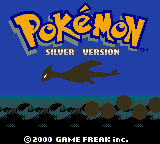
| The subject of this article has no official name. The name currently in use is a fan designator; see below for more information. |
| Generation II | ||||||||||||||||||
|---|---|---|---|---|---|---|---|---|---|---|---|---|---|---|---|---|---|---|
|
||||||||||||||||||
|
The second generation (Japanese: 第二世代 second generation) of Pokémon games, referred to as the Gold & Silver series in Pokémon Crystal’s box blurb and instruction manual, and sometimes called the metal generation or metallic generation by older players due to the names of the paired versions, is a sequel to the Generation I games Red and Green, Blue, Red and Blue, and Yellow.
Beginning with Pokémon Gold and Pokémon Silver and later joined by Pokémon Crystal, Generation II began the Pokémon series’ expansion-focused nature, introducing to the world 100 new Pokémon which did not exist and are unable to be obtained in the Generation I games, and the new region of Johto. Many of these Pokémon expand the evolution families of older Pokémon, while a majority of them are brand-new evolutionary families.
The initial hint that Generation II was on its way came in early 1997, with the release of the anime’s first episode. A Pokémon appears to Ash Ketchum on the first day of his journey, shortly after he and Pikachu become friends, that cannot be identified by the Pokédex. This magnificent golden bird, later revealed to be the Legendary mascot of Gold Version, Ho-Oh, was the first Pokémon from a future generation to debut in the anime. The games, initially named directly as “Pocket Monsters 2”, were set for release in late 1997, but were pushed back to 1999 with the intention to redevelop the games to work with the Game Boy Color better.
Details in the games indicate that the storyline of the Generation II games occurs three years after the one in Generation I and Generation III, while the storyline of the Sinnoh-based Generation IV games indicate that they occur contemporaneously to Generation II as Generation I does to Generation III.
Advances in gameplay
In addition to retaining the system from Generation I in almost every aspect, several key innovations were made to the series, most of which have been retained in every generation since.
Major additions
- The introduction of 100 new Pokémon, bringing the total to 251. Several are evolved forms of or pre-evolutions of Generation I Pokémon, while others are their…
